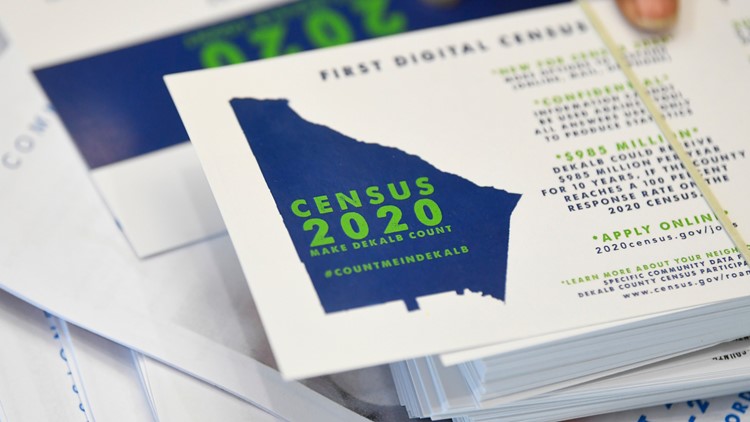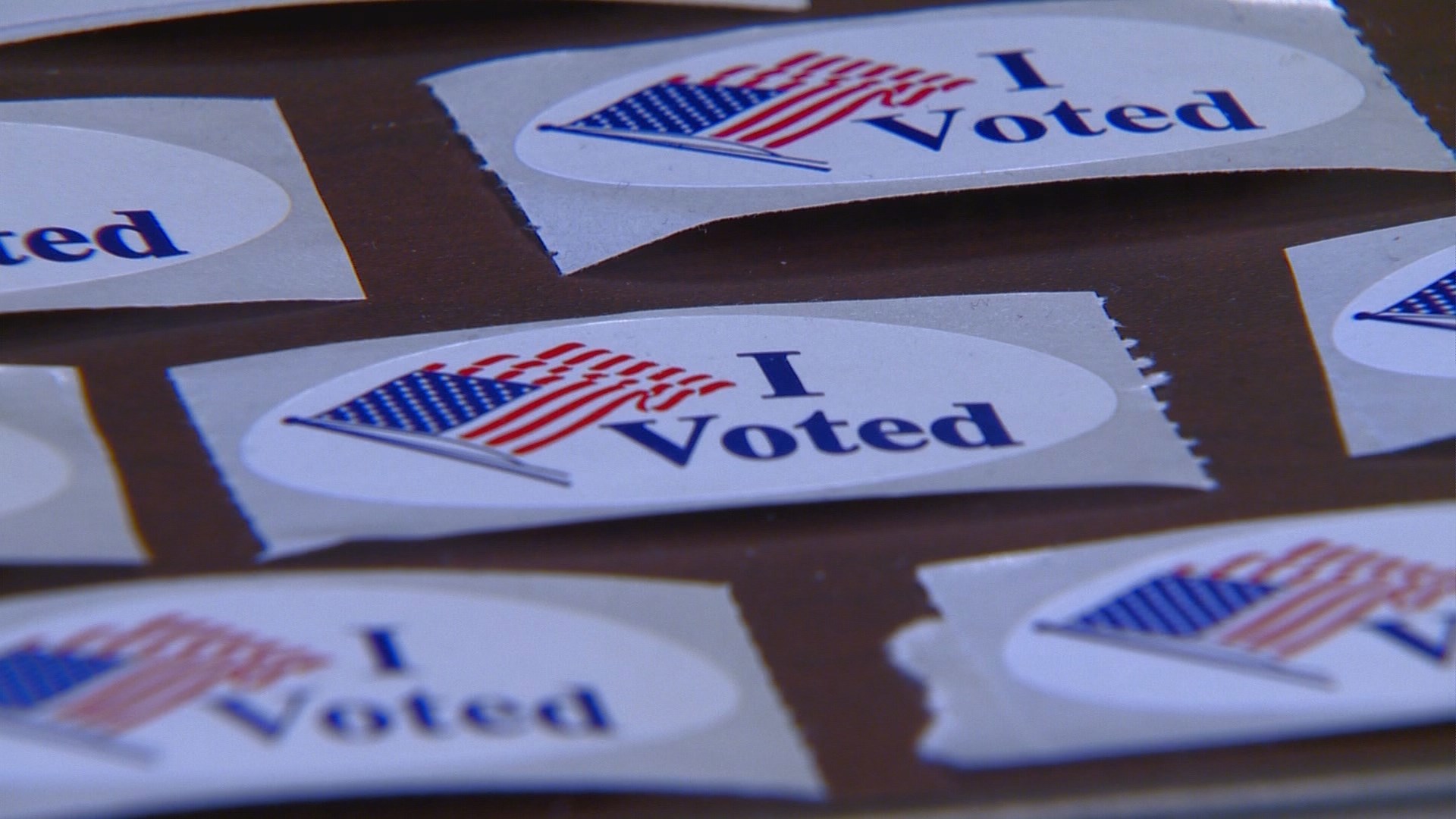BOISE, Idaho — This week, the first people were counted as part of the 2020 census. They live in Toksook Bay, Alaska, where Census workers began their decennial count that aims to document every person living in the United States.
The Idaho Press reports invitations to respond to the 2020 census will be sent out to households across the U.S. in March. A lot is at stake for Idaho and states across the country when it comes to the 2020 census. According to the survey’s website, the census decides where billions of dollars in federal funding will go, the number of seats each state will have in the U.S. House of Representatives, and where congressional and state legislative districts should be drawn.
According to an NPR report, census has started in rural Alaska since 1867 because when springtime comes, residents leave a lot of small towns, so starting the count in January makes it easier to get around the area and ensures most people will be in their homes.
For the rest of the country, Census invitations will start trickling into mailboxes in mid-March. Here is a list of things to know before the invitations go out:
START DATES
The official Census Day is April 1, according to the census website, though it is just a reference day, since most households will be receiving invitations to respond to the 2020 census online between March 12 to 20.
The census survey is 10 questions long and takes an estimated 10 to 20 minutes to complete, the census website says. Residents will be asked about their name, age, gender and other basics. There will be no questions asking about citizenship or social security numbers.
Between March 16 and 24, if households have not responded yet, they will receive a reminder letter. And then from March 26 to April 3, another reminder will be sent and then April 8 to 16, a reminder with a paper questionnaire will be sent to households that have not responded.
From April 20 to 27, a final reminder will go out to any households that have not responded. This will be the last paper reminder before a Census worker comes to households that haven’t responded.
WHAT IS AT STAKE?
The 2020 census will determine the number of congressional seats and Electoral College votes each state gets.
According to a George Washington University study, there are around 320 census-guided federal programs that distribute funding each year to state and local governments, nonprofits, schools, businesses and other public goods.. The same study found that in fiscal year 2017, federal spending programs relied on 2010 census-derived data to distribute $1.504 trillion to state and local governments, nonprofits, businesses, and households across the U.S.
This funding goes toward roads, schools and other public goods.
According to Treasure Valley Complete Count, a website put together by The Community Planning Association of Southwest Idaho, an organization dedicated to counting every Idahoan in the 2020 census, Idaho is expected to receive about $1,473 per person counted, per year in federal funding.
NEW CENSUS-TAKING PROCEDURE
There are four ways to complete the census: on paper, by phone, in person, or, for the first time this year, through an online form.
THE CENSUS WILL ASK
- How many people are there living in the residence on April 1, 2020.
- If the residence is owned with a mortgage or loan, if it is owned without a mortgage, if it is rented, or if it is occupied without payment of rent.
- What is the best telephone number to reach the residence.
- The names of each person living in the home, their age and date of birth and their race.
- If any resident in the home is Hispanic, Latino or of Spanish descent.
- The relationship of each resident to each other.
The 2020 census will not ask for a person’s U.S. citizenship status. The Trump administration had previously announced it would put a citizenship status question on the 2020 census, but the U.S. Supreme Court struck down the citizenship question and said the administration’s reasoning for including it appeared “contrived.”
PRIVACY
The Census Bureau cannot legally share questionnaire responses with public or federal agencies until 72 years have passed since the data was collected. This includes any information to immigration officials and law enforcement, according to the census website.
A Trump administration executive order from September expands the use of federal, state and local administrative records. The U.S. Census Bureau announced it would be asking states to share driver’s license records with the federal agency.
Idaho officials announced in November that the state would not be sharing driver’s license records with the Census Bureau.
LOCAL EFFORTS
Gov. Brad Little established an Idaho Complete Count Committee to ensure the census is reaching hard-to-count groups. The committee is one of several Complete Count Committees in states across the U.S.
The Idaho committee is made up of members from many groups and organizations, discussed the establishment of subcommittees to target historically hard-to-count communities. These communities include immigrants, children under 5 years old, seniors, homeless people, migrant workers, renters and households with low internet access.
The 2020 census will not ask for a person’s U.S. citizenship status. The Trump administration had previously announced it would put a citizenship status question on the 2020 census, but the U.S. Supreme Court struck down the citizenship question and said the administration’s reasoning for including it appeared “contrived.”
The Boise City Council voted in October to spend $100,000 of its own funds to make sure as many people within city limits as possible take the federally mandated survey next year.
LANGUAGE ACCESS
One Treasure Valley Complete Count sub-committee, made up of Community Council of Idaho, Catholic Charities, Conservation Voters for Idaho and Western Idaho Community Action Partnership, is designing informational flyers in both Spanish and English.
The sub-committee is aiming for people to answer the census before a worker needs to come out to count them.
They are also aiming to combat some of the fear in the Latino community that came with the citizenship question controversy.
“I know we have a large contingency of undocumented people here that are not going to fill out that census form,” said Raquel Reyes, immigration specialist with Community Council of Idaho. “That is where I want to be able to reach that population more than anything. I am hoping through school districts, through head start programs, we’ll be able to reach those families so we can get them counted.”
The paper census forms are available in English and Spanish. Households can respond by phone and online in Spanish, Arabic, Chinese, French, Haitian, Creole, Japanese, Korean, Polish, Portuguese, Russian, Tagalog and Vietnamese.
The Census Bureau has guides for answering the online questionnaire that are in 59 different languages, including American Sign Language.
CENSUS WORKER RECRUITING
The Census Bureau will hire hundreds of thousands of temporary workers nationwide to help with the count. The Boise census office expects to hire roughly 9,000 people, according to Michael Hall, assistant regional census manager.
The workers’ role will largely begin after April 1, to knock on doors of households that have not responded to the census yet.
To apply for a 2020 census job, applicants must be at least 18 years old and have a valid Social Security number and working email.
The hourly wage for census jobs depends on the position and location. For more information, people interested in applying for jobs can visit 2020census.gov/en/jobs. Census takers are paid $13.50 to $14.50 in Ada County and $13.50 in Canyon County, according to the site.
More from our partner Idaho Press: Big cats on the prowl in Magic and Wood River Valleys
Watch more 'Growing Idaho':
See them all in our YouTube playlist:



